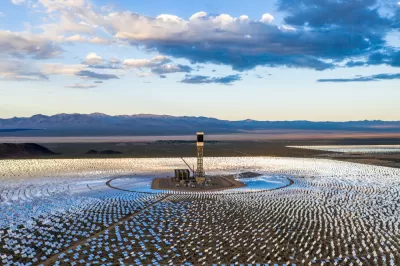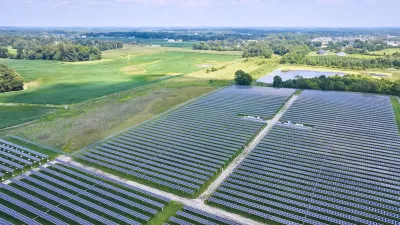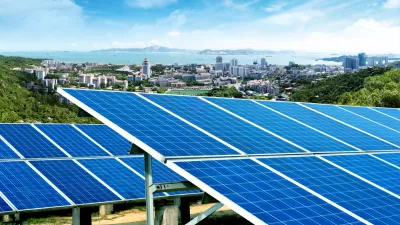The sprawling Mojave Desert plays a key role in carbon sequestration, storing around 10 percent of California’s carbon. But the fragile ecosystem is threatened by large-scale renewable energy projects.

A StoryMap from the Mojave Desert Land Trust outlines the role of the Southwestern desert in fighting climate change, highlighting the conflict between desert conservation and the rise of large-scale solar power generation projects. According to the MDLT, “Around 10% of the state’s carbon is sequestered underground in the desert’s plants and soil. But that carbon storage capacity is under threat from an unlikely source: large-scale renewable energy projects.”
“Arid soils provide the third largest global pool of carbon storage potential. In California, the desert accounts for nearly 10% of the state’s carbon sequestration.” But large-scale solar projects are often “poorly sited in pristine functioning ecosystems,” which can reduce the desert’s capacity to serve as an effective carbon sink.
According to MDLT, “To protect the desert’s fragile resources, we need to focus on leveraging renewable energy options with the least impact on functioning ecosystems.” To this end, “Several innovative technologies capable of assisting in our transition to clean energy, including rooftop and community solar, should be leveraged.” The article encourages boosting community and rooftop solar installations that utilize already developed land to create more solar energy production. “Recent studies have shown that rooftops across the United States offer enough acreage to generate the entire electrical demand of the country and more. One study found that installing 1 GW of rooftop solar would potentially avoid the disturbance of almost 5,200 acres of land – an area around the size of Monterey.”
See the linked StoryMap for more statistics and a visualization of California’s “development focus areas,” previously disturbed land recommended for renewable projects.
FULL STORY: How the desert will help us tackle climate change

Study: Maui’s Plan to Convert Vacation Rentals to Long-Term Housing Could Cause Nearly $1 Billion Economic Loss
The plan would reduce visitor accommodation by 25,% resulting in 1,900 jobs lost.

North Texas Transit Leaders Tout Benefits of TOD for Growing Region
At a summit focused on transit-oriented development, policymakers discussed how North Texas’ expanded light rail system can serve as a tool for economic growth.

Why Should We Subsidize Public Transportation?
Many public transit agencies face financial stress due to rising costs, declining fare revenue, and declining subsidies. Transit advocates must provide a strong business case for increasing public transit funding.

How to Make US Trains Faster
Changes to boarding platforms and a switch to electric trains could improve U.S. passenger rail service without the added cost of high-speed rail.

Columbia’s Revitalized ‘Loop’ Is a Hub for Local Entrepreneurs
A focus on small businesses is helping a commercial corridor in Columbia, Missouri thrive.

Invasive Insect Threatens Minnesota’s Ash Forests
The Emerald Ash Borer is a rapidly spreading invasive pest threatening Minnesota’s ash trees, and homeowners are encouraged to plant diverse replacement species, avoid moving ash firewood, and monitor for signs of infestation.
Urban Design for Planners 1: Software Tools
This six-course series explores essential urban design concepts using open source software and equips planners with the tools they need to participate fully in the urban design process.
Planning for Universal Design
Learn the tools for implementing Universal Design in planning regulations.
Ascent Environmental
Borough of Carlisle
Institute for Housing and Urban Development Studies (IHS)
City of Grandview
Harvard GSD Executive Education
Toledo-Lucas County Plan Commissions
Salt Lake City
NYU Wagner Graduate School of Public Service





























